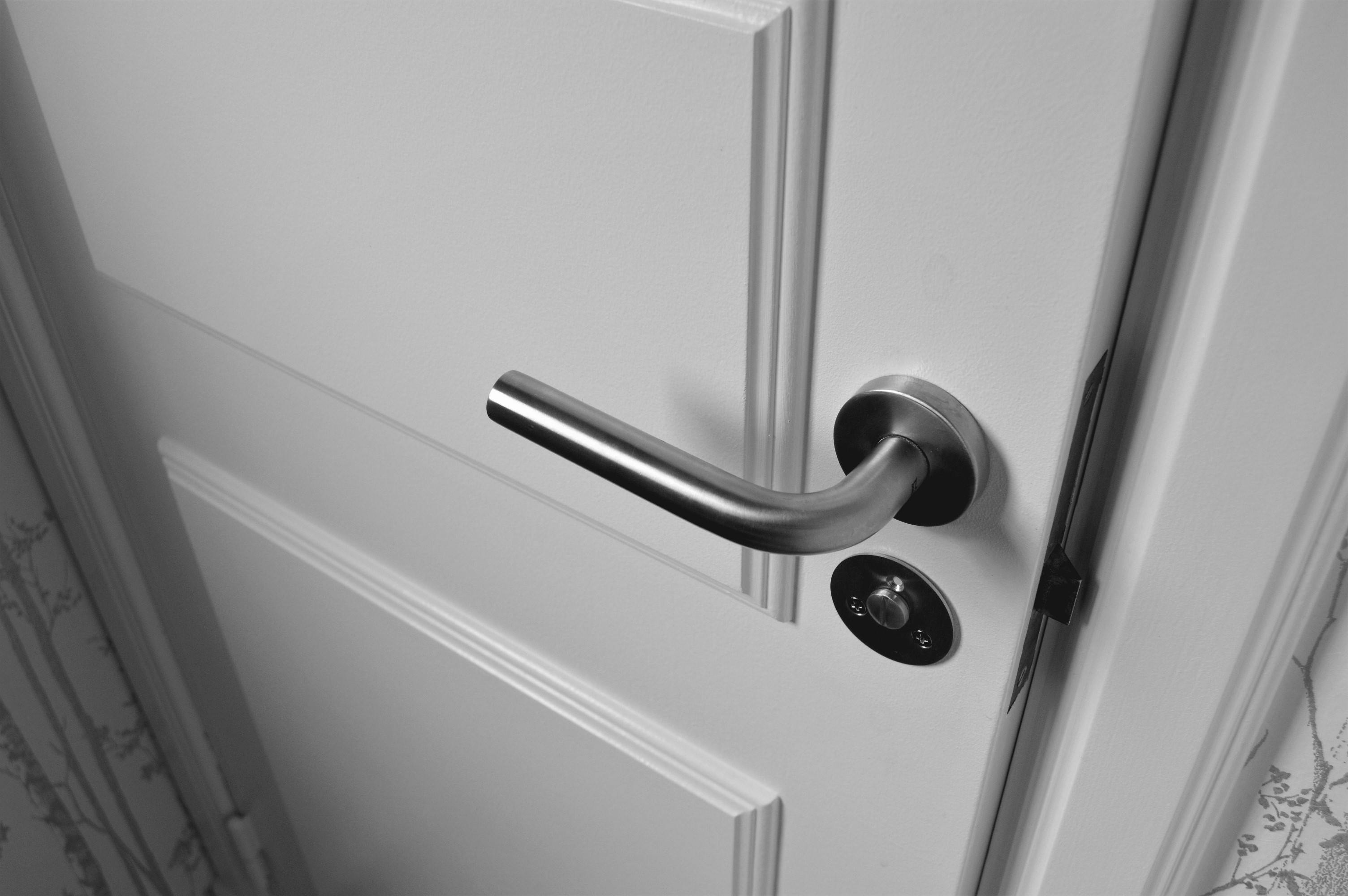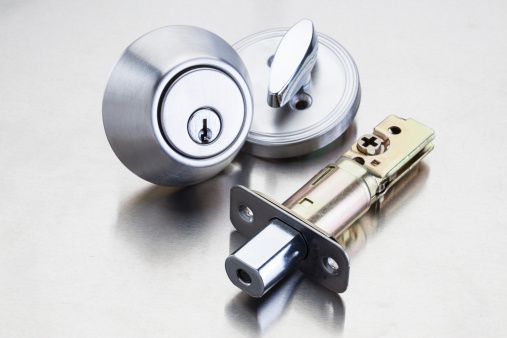What do you imagine when you think of a lock? You’re probably thinking of the typical front door lock that we see in homes across the country. However, several different styles of locks are commonly used in front doors ranging from deadbolts to chubb front door locks.
Here’s what you should know about deadbolts, latches, and chubb door locks.
What Is A Lever Lock?
In the year 1818, ironmonger Charles Chubb opened up a locksmith company in Wolverhampton. This was the beginning of what would become one of the most popular and successful styles of door locks. The lever lock company became the exclusive supplier of locks for the General Post Office.

It was only a matter of time before these door locks became popular choices for homes and businesses throughout the country. Chubb front door locks, also known as lever locks, have a series of internal levers lifted when you insert and turn the key. This allows the lock bolt to be turned in the door to be opened.
What Is The Anatomy Of Door Locks
It’s essential to understand the basic components of your door lock. It’s more than just turning a key and opening your door. There is some complicated engineering inside the locks that you use every day.
Those little grooves on your keys are called teeth. When you insert a key into the cylinder of the door lock, those little teeth lift either pins or a series of levers that allow the door to become unlocked. The leavers, or the pins, need to be raised to a certain height which is why each key is different, and your house key doesn’t work for your friends and neighbors.
You’ll find a tumbler inside the lock that houses the locking mechanism itself. This is where you’ll find the pins and levers responsible for either accepting or rejecting the key. This will be connected to a bolt that is the part of the lock that makes sure it stays securely closed after you lock the door. Let’s take a closer look at a few of these parts.
What Are The Parts Of A Door Lock?
Broadly speaking, there are three essential parts of any door lock. These are the cylinder, the bolt, and the box. You’ll find these systems in everything from classic chubb front door locks to modern electronic or smart locks.
Cylinder
The cylinder is the part of the lock that you interact with the most. This is the part that has the keyhole on and the tumbler that contains those pins and leavers we talked about earlier.

The cylinder works when you insert your key into the keyhole, which lifts the pins and lets you turn the key. If the pins are not lifted, you won’t be able to turn your key.
If you’ve ever had a worn-out key or a broken lock, you might have had it to jiggle the keys to find that right spot to unlock the door. This is because the key is no longer properly engaging the pins. When there’s no key in the keyhole or the wrong key is inserted, the pins will stay engaged, and the cylinder will not be able to turn.
Bolt
The bolt is the most challenging part of the lever locks. The bolt is that piece of metal that extends out from the lock and into the door frame itself. This is the part of the lock that’s responsible for keeping your door securely closed when you’re away from home.
There are two types of bolts. There are spring action bolts that can close automatically and deadbolts that need to be turned with the key. Spring action bolts offer additional convenience because they can automatically lock behind you. Deadbolts are safer and are more challenging to open without a key.
This comes down to how these two styles of bolts work on a mechanical level. The spring action bolt can be forced back into the door’s body using manual pressure. This is a classic style of forcing a lock known as a “jimmy.” You cannot jimmy a deadbolt. These locks are held in place by the mechanisms inside the cylinder and can only be moved by turning the key. This is the big reason why deadbolts are considered much safer and more secure than other bolt styles.
Box
The box is the hole that the bolt fits into. This is typically in your door frame and is designed to fit the bolt of your lock perfectly. One of the most common reasons to contact your local locksmith is to have them repair or resize the box to ensure that it still securely holds the bolt in place.
The box is one of the most overlooked aspects of a door. When most home and business owners think of their locks, they’re thinking of the locking mechanism itself, but not the box that the bolt fits into. Over time, the box can get worn out and no longer securely hold the bolt.
If the box is no longer securely holding the bolt, it’s easier to force open the lock. This is why it’s important to reach out to your local locksmith to have them make sure that your bolt and box are a perfect match.
What Are The Parts Of A Deadbolt?
Lever locks are a popular example of deadbolt styles locks. These locks are considered tougher and safer than other types of front door locks. Here’s what makes a deadbolt stand out.
The Actual Bolt
There are a few things about a deadbolt that make it especially powerful. These start with the bolt itself.
The bolt of the deadbolt is typically thicker and extends deeper into the box than other types of locks. This prevents would-be burglars from being able to jimmy this lock or force it open as they could with spring action locks.
This particular bolt style is much harder to force open than other lock styles. It is also common for a deadbolt to be installed as a secondary locking mechanism over a spring auction bot.
The Thumb Latch
If you look at a deadbolt lock in your home, you’ll notice that latch on the inside of the door that you can turn to lock or unlock the deadbolt. This is known as the thumb latch.
The thumb latch provides the important function of allowing you to easily and quickly unlock or lock your door from the inside.
The thumb latch is typically above the handle on the inside of the door. You press down on the thumb latch with your thumb, which releases the deadbolt from the lock. You can see the same mechanism on garden gates across the country.
The Turn Piece
The turn piece offers similar functionality to a thumb latch. This is a part of the lock that extends from the outside, through the internal cylinder, into the inside of the door. You can use a turn piece to lock or unlock a deadbolt from the inside without using your keys.
It’s important to make sure that your turn piece is functioning properly. Over time, a turn piece can become loose, making it less responsive and harder for you to lock or unlock your door from the inside. A locksmith can come over and quickly inspect your turn piece and give it a quick repair to ensure that it’s functioning properly.
The Keyhole
From historic chubb front door locks to modern smart locks, every lock has a keyhole. The keyhole is the most deceptively simple part of your lock. It’s designed to accept your key and only your key. Even if you can insert a different key into the keyhole of your lock, you still shouldn’t be able to turn it and unlock your door.
One of the biggest issues individuals face is that their keys become bent or otherwise deformed and no longer fit in the keyhole. A locksmith can quickly cut new keys for your lock even if your key is completely bent.
Get Professional Help With Chubb Door Locks
What kind of locks do you have in your home or business? At Londonlocksmith24h, we service everything from chubb front door locks to contemporary styles of door locks. Our team can handle any locksmithing job, from changing old locks to servicing your tumblers and cutting new keys. Reach out to us today to learn more about our offerings and schedule your next service!

The London Locksmith Team is your trusted partner for premium locksmith services in London. Committed to providing top-notch local solutions, we take pride in our prompt response times, ensuring we reach any address swiftly. With strategically placed offices across the city, we guarantee unmatched convenience and dependability for our customers.
